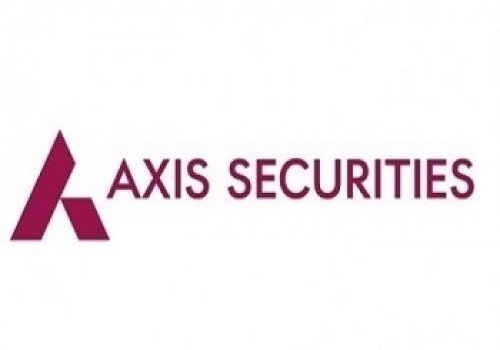Jeera trading range for the day is 22270-23670 - Kedia Advisory

Gold
Gold prices rose by 1.26%, settling at 95,912, as a softer U.S. Dollar prompted bargain buying among investors. The rebound comes amid renewed optimism in safe-haven assets, sparked by a series of developments in Washington. Treasury Secretary Scott Bessent stated that steep U.S.-China tariffs must be rolled back before any substantial negotiations can take place. Meanwhile, President Trump’s temporary exemption of certain automotive levies helped ease some trade war concerns, supporting bullish sentiment in the precious metals market. Despite the price surge, physical demand in India remained sluggish due to high domestic prices. Dealers in India offered discounts of up to $74 per ounce—up from $33 last week—highlighting tepid consumer interest. In China, however, premiums were relatively stable at $15–$21 per ounce, though still below the previous week’s range of $24–$54. Other key markets like Hong Kong, Singapore, and Japan also reported minimal premiums or mild discounts, indicating subdued physical activity globally. India's gold consumption is projected to moderate in 2025, ranging between 700 to 800 metric tons, slightly down from last year’s peak of 802.8 tons. While high prices may weigh on jewellery demand, investment interest remains resilient. Technically, the market is showing signs of fresh buying interest, with open interest rising by 3.9% to 18,030 contracts. Immediate support lies at 95,330, with further downside potential to 94,745. On the upside, resistance is seen at 96,345, and a breakout could push prices toward 96,775.
Trading Ideas:
* Gold trading range for the day is 94745-96775.
* Gold rose buoyed by bargain hunters capitalizing on a softer dollar.
* The dollar index extended losses to below the 99.4 mark, to remain near the three-year lows of 98
* The gold-to-silver ratio has surged to its highest level since 1994 (excluding the pandemic).
Silver
Silver prices slipped by -0.29% to settle at 97,511, as investors booked profits amid mixed signals from the U.S.-China trade front. Early optimism regarding potential tariff cuts was tempered after Treasury Secretary Scott Bessent clarified that no official proposals had been made and talks with China were still pending. This back-and-forth sentiment dampened investor appetite for risk, leading to minor weakness in the precious metal. U.S. economic data also provided limited support to silver. Initial jobless claims rose slightly to 222,000 in April’s third week, aligning with expectations. Meanwhile, the Chicago Fed National Activity Index fell into negative territory at -0.03 in March, signaling a softening in economic activity. According to the Silver Institute, the market is expected to post a supply deficit for the fifth consecutive year, albeit narrower than before, at 117.6 million troy ounces. Industrial demand is projected to set a new record, crossing 700 million ounces for the first time, driven by structural growth in green technologies. However, jewelry demand is expected to fall by 6%, with India accounting for much of the decline due to high domestic prices. On the technical front, silver is under long liquidation as open interest fell sharply by -16.63% to 9,509 contracts. Prices face immediate support at 96,970, with deeper downside potential toward 96,435. Resistance is now seen at 97,905, and a breakout could push prices toward 98,305 in the near term.
Trading Ideas:
* Silver trading range for the day is 96435-98305.
* Silver dropped on profit booking amid evolving U.S.-China trade signals.
* The Trump administration is reportedly considering tariff cuts pending talks with Beijing.
* Treasury Secretary Scott Bessent clarified that no unilateral cuts have been proposed and formal talks have not yet begun.
Crude oil
Crude oil prices rose by 1.34% to settle at 5,380, supported by a weaker U.S. Dollar and elevated geopolitical tensions. Market sentiment was buoyed by short-term optimism despite lingering concerns over trade policies and global oversupply risks. Kazakhstan’s statement that it would prioritize national interests over OPEC+ commitments added further uncertainty to the group’s ability to maintain production discipline, especially since the country has frequently exceeded its quota. Any progress toward lifting sanctions on Iran could potentially reintroduce significant oil supply to global markets, further pressuring prices. In terms of inventory data, the U.S. Energy Information Administration (EIA) reported a modest build in crude oil stocks, rising by 244,000 barrels last week—against expectations for a 700,000-barrel draw. However, refined product inventories painted a tighter supply picture, with gasoline stocks dropping by 4.5 million barrels and distillates down by 2.3 million barrels, both significantly exceeding forecasts. On a broader scale, the International Energy Agency (IEA) revised its 2025 oil demand growth outlook downward by 70,000 barrels per day (bpd) to 1 million bpd, citing an uncertain global macroeconomic environment. Technically, the market is under short covering, with open interest declining by 3.54% to 13,690 contracts. Support is seen at 5,319, with further downside risk to 5,259. Resistance lies at 5,430, and a break above could target 5,481.
Trading Ideas:
* Crudeoil trading range for the day is 5259-5481.
* Crudeoil gained as weaker dollar lent some support amid trade tensions and high policy uncertainty.
* Signs that the U.S. and China could be moving closer to trade talks supported prices.
* U.S. and Iran will hold a third round of talks this weekend on a possible deal
Natural gas
Natural gas prices dropped by -3.27% to settle at 263.5, pressured by rising supply and subdued demand amid shifting seasonal patterns and broader macroeconomic concerns. A surge in production, particularly in the Lower 48 states of the U.S., where output reached a record 106.6 billion cubic feet per day in April, has tilted the market toward oversupply. Simultaneously, warmer-than-usual temperatures are reducing heating demand, further weakening short-term fundamentals. The latest inventory data from the U.S. Energy Information Administration (EIA) showed a substantial injection of 88 billion cubic feet (bcf) into storage during the week ending April 18, significantly above expectations of a 65 bcf build. This marked the largest weekly build in nearly a year. Despite the jump, total stocks remain 19.8% below year-ago levels and 2.2% under the five-year average, reflecting a tighter historical backdrop. Internationally, LNG demand has softened. Chinese imports of LNG fell by 20% from the prior month, hampered by trade tensions with the U.S., while India's LNG consumption declined due to more competitive coal prices. From a technical standpoint, the market is under fresh selling pressure, evidenced by a sharp 39.11% increase in open interest to 13,453 contracts. Immediate support lies at 257.3, with deeper downside risk to 251.2. Resistance is seen at 269.8, with further upside potential capped at 276.2.
Trading Ideas:
* Naturalgas trading range for the day is 251.2-276.2.
* Natural gas fell amid ample supply and uncertain demand due to macroeconomic headwinds.
* Domestic gas production in the Lower 48 states rose to 106.6 billion cubic feet per day so far in April
* Russia cut production of natural gas in January-March by 6% year-on-year to 155 billion cubic metres
Copper
Copper prices edged higher by 0.32% to settle at 860.8, supported by speculative buying as investors repositioned in anticipation of potential supply-side disruptions amid persistent geopolitical uncertainty. While the market initially gained on hopes of easing U.S.-China trade tensions, the optimism quickly waned after U.S. Treasury Secretary Scott Bessent confirmed that no unilateral tariff cuts have been proposed and formal talks are yet to begin. China has also made it clear that further negotiations would only follow a halt in U.S. threats. Copper market sentiment was further shaped by robust Chinese economic data. China’s Q1 economic growth outpaced expectations, bolstered by strong consumption and industrial output. However, refined copper imports fell by 1.4% year-on-year in March, totaling 467,000 metric tons, due to elevated U.S. prices shifting trade flows. On the supply side, China’s March refined copper production increased 8.6% year-on-year to 1.25 million metric tons. Globally, the refined copper market recorded a 61,000 metric tons surplus in February, down from 90,000 metric tons in January, according to the International Copper Study Group. Technically, the market witnessed fresh buying interest with an 8.55% rise in open interest to 6,920 contracts. Copper is seeing support at 856.3, with further downside risk to 851.9. Resistance is now at 863.8, and a breakout above could push prices to 866.9.
Trading Ideas:
* Copper trading range for the day is 851.9-866.9.
* Copper gained as investors reassessed the outlook for global trade.
* However, enthusiasm over a potential thaw in U.S.-China trade tensions faded.
* U.S. Treasury Secretary Scott Bessent dampened optimism, clarifying that no unilateral tariff cuts have been proposed
Zinc
Zinc prices settled higher by 1.33% at 255.65, driven by fresh supply concerns following the production halt at Peru's Antamina mine due to an unexpected accident. Global mine disruptions resurfaced, including Nyrstar’s announcement of a 25% production cut at its Hobart operations, which further supported bullish sentiment. On the macro front, market optimism around US-China trade tensions cooled after officials clarified that no unilateral tariff reductions were on the table, and formal negotiations had not begun. Despite some softening in rhetoric from both sides, the lack of concrete progress weighed on risk appetite, contributing to a yuan pullback. In China, refined zinc production in March 2025 saw a strong rebound, rising nearly 14% MoM and over 4% YoY, partly offsetting earlier weakness in February caused by holidays and maintenance. However, cumulative production for Q1 remained down by around 6% YoY. Zinc alloy output also rose in March, supported by increased operational days and smelter recovery post-holidays. The global zinc market deficit narrowed to 10,000 metric tons in January from 41,100 tons in December, with ILZSG data showing a full-year swing to a 62,000-ton deficit in 2024, from a surplus in 2023. Technically, the zinc market is under fresh buying pressure, with a 0.37% rise in open interest to 2,466, indicating continued bullish interest. Zinc is now finding support at 253.1, with further downside limited to 250.4. Resistance is seen at 257.2, and a break above could push prices toward 258.6.
Trading Ideas:
* Zinc trading range for the day is 250.4-258.6.
* Zinc gains following Antamina mine production halt due to an accident
* China’s March refined zinc production rose 14% MoM, yet Q1 production down 3% YoY.
* China boosts fiscal spending via CNY 286B in bonds to hit 5% GDP target
Aluminium
Aluminium prices edged higher by 0.3% to 237, buoyed by improved market sentiment after former President Trump hinted at a possible reduction in tariffs on China. This optimism was partially offset by broader macroeconomic concerns, including slower global growth projections by Goldman Sachs, which led to a downward revision in aluminium price forecasts to $2,000/ton for Q3 2025. On the supply front, China's aluminum ingot inventory reduction provided price support; however, active offloading by suppliers has pressured spot premiums. Despite China nearing its government-imposed 45 million-ton production cap, smelters are expected to maintain high global supply by ramping up capacity overseas. China's aluminium output hit a record 44 million tons in 2024 and continues to rise, with a 4.4% YoY increase in March to 3.75 million tons. Q1 production reached 11.07 million tons, up 3.2% YoY. Exports of unwrought aluminium and products surged 17% YoY in the first ten months of the current year, underlining strong external demand. Meanwhile, aluminium stockpiles at Japan’s major ports fell 1.2% in March to 309,700 tons, signaling tighter regional availability. Globally, primary aluminium output in March climbed 2.3% YoY to 6.227 million tons, supported by rising alumina production in Guinea, Australia, and China. Technically, the market is witnessing fresh buying, as open interest surged by 11.07% to 4,626, with a modest price gain of 0.7. Aluminium is getting support at 235.5, with a further decline possibly testing 233.8, while resistance is seen at 238.1, and a break above could lift prices toward 239.
Trading Ideas:
* Aluminium trading range for the day is 233.8-239.
* Aluminium gains as Trump indicated a potential reduction in tariffs on China
* Goldman Sachs cuts aluminium price forecast to $2,000/t in Q3 2025
* Global output rises 2.3% YoY in March; China hits record 44 Mt in 2024
Cottoncandy
Cottoncandy prices surged by 1.52% to 55,950, buoyed by supply concerns after the Cotton Association of India (CAI) revised its domestic production estimates downward by 4 lakh bales to 291.30 lakh bales for the 2024-25 season. The reduction, mainly attributed to lower yields in Maharashtra, is expected to tighten supplies despite flat consumption levels. As of March end, total cotton supply, including imports and opening stocks, stood at 306.83 lakh bales. Notably, cotton stocks by the end of March are estimated at 127.83 lakh bales, with a significant portion—100.83 lakh bales—held by the Cotton Corporation of India (CCI), Maharashtra Federation, and traders. India’s imports are projected to more than double this season to 33 lakh bales, up from last season’s 15.20 lakh bales, driven by lower domestic production. On the other hand, exports are seen falling sharply to 16 lakh bales, down from 28.36 lakh bales last year. CAI also lowered the expected closing stock for September 2025 to 23.49 lakh bales, compared to 30.19 lakh bales a year earlier. However, despite tightening fundamentals, upside potential may be limited due to subdued mill demand and ample existing stocks. On the global front, the U.S. reduced its cotton exports by 100,000 bales, raising ending stocks to 5 million bales, while global mill use and trade saw minor reductions. Technically, the market is witnessing fresh buying with open interest rising 2.41% to 255. Cottoncandy is now supported at 55,030, with further downside likely around 54,110. Resistance is seen at 56,740, and a break above could drive prices toward 57,530.
Trading Ideas:
* Cottoncandy trading range for the day is 54110-57530.
* Cotton prices gained as CAI expects a shrinkage in the domestic crop
* CAI has estimated the total cotton supply till the end of March including the imports at 306.83 lakh bales.
* Cotton exports for the 2024-25 season are pegged at 16 lakh bales, lower by 12.36 lakh bales
* In Rajkot, a major spot market, the price ended at 25943.45 Rupees dropped by -0.07 percent.
Turmeric
Turmeric prices settled lower by 0.9% at 14,548, primarily due to weak domestic demand and lower export inquiries amidst adequate supplies. Total arrivals in key markets stood at 51,732 bags, significantly lower than the previous session’s 74,059 bags. Notably, arrivals in Sangli market have declined by around 7 lakh bags this season, compared to 7.2 lakh bags last year, signaling lower-than-expected production. The area under turmeric cultivation this season was 3.30 lakh hectares, 10% higher than the previous season, but production is expected to be lower due to untimely rains that have hampered rhizome growth and caused some crop rot, particularly in the Nanded region. Despite the weak domestic demand, concerns about low arrivals and reduced production estimates have provided some support to prices. This year’s yield is expected to drop by 10-15% compared to last year, with final confirmation likely once harvesting picks up. On the export front, turmeric exports during the April-January period increased by 12.93% to 148,690.78 tonnes, but January exports showed a significant drop of 23.17% from December. Imports during the same period rose by 70.13%, reflecting stronger demand in foreign markets. Technically, the market is under fresh selling pressure, as open interest rose by 0.14% to settle at 14,400 contracts while prices fell by 132. Support is seen at 14,336, with a potential test of 14,122 if the downside continues. Resistance is at 14,832, and a break above this level could push prices toward 15,114.
Trading Ideas:
* Turmeric trading range for the day is 14122-15114.
* Turmeric dropped due to weak domestic demand and weak export enquiries.
* Arrivals in key markets dropped to 51,732 bags from 74,059 the previous session
* Lingering worries over slow rhizome growth and low yields limited further downside in prices.
* In Nizamabad, a major spot market, the price ended at 14947.15 Rupees dropped by -0.14 percent.
Jeera
Jeera prices settled down by 1.1% at 23,005, pressured by comfortable supplies and subdued export demand amidst adequate existing stocks. Total cumin arrivals in Gujarat stood at 27,300 bags, a noticeable increase from the previous session’s 24,000 bags, adding downward pressure on prices. While supply from Rajasthan remains limited due to delayed sowing in key producing regions, the start of the new crop in Gujarat has been delayed by around a month, leading to tight supplies in the near term. Despite this, the upside for Jeera prices appears limited due to low demand, with current export activity being met from available stocks. Farmers are holding approximately 20 lakh bags of cumin, but only 3-4 lakh bags are expected to be traded by the end of the season, leaving a carry-forward stock of about 16 lakh bags. Jeera exports during April-January 2025 saw a significant rise of 66.98% to 182,167.70 tonnes compared to the same period last year. However, January exports showed a slight decrease of 5.5% from December 2024, although still 37.82% higher than in January 2024. Imports, on the other hand, dropped sharply by 93.84% during the same period, signaling weak external demand. Technically, the market is under long liquidation, with open interest falling by 0.05% to settle at 5,622 contracts. Support for Jeera is seen at 22,640, and a further drop could test 22,270. Resistance is likely at 23,340, and a break above this level could push prices toward 23,670.
Trading Ideas:
* Jeera trading range for the day is 22270-23670.
* Jeera dropped due to comfortable supplies and tepid export interest.
* Gujarat saw 27,300 bags arrive, up from 24,000 bags, exerting further downward pressure.
* Supply trends remain crucial, as near-term supplies remain tight due to limited arrivals from Rajasthan.
* In Unjha, a major spot market, the price ended at 23416.5 Rupees dropped by -0.39 percent.
Views express by all participants are for information & academic purpose only. Kindly read disclaimer before referring below views






















